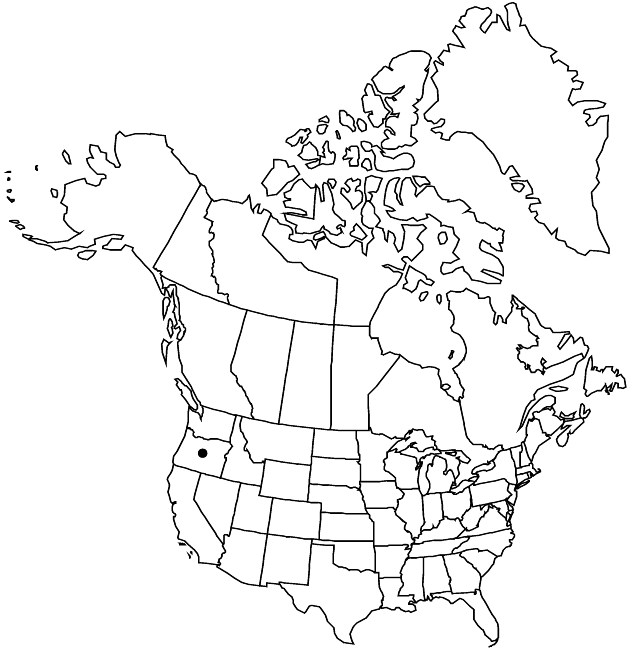Difference between revisions of "Eucephalus vialis"
Torreya 20: 122. 1921.
FNA>Volume Importer |
imported>Volume Importer |
||
| (6 intermediate revisions by 2 users not shown) | |||
| Line 8: | Line 8: | ||
}} | }} | ||
|common_names=Wayside aster | |common_names=Wayside aster | ||
| + | |special_status={{Treatment/ID/Special_status | ||
| + | |code=E | ||
| + | |label=Endemic | ||
| + | }}{{Treatment/ID/Special_status | ||
| + | |code=C | ||
| + | |label=Conservation concern | ||
| + | }} | ||
|basionyms= | |basionyms= | ||
|synonyms={{Treatment/ID/Synonym | |synonyms={{Treatment/ID/Synonym | ||
|name=Aster vialis | |name=Aster vialis | ||
|authority=(Bradshaw) S. F. Blake | |authority=(Bradshaw) S. F. Blake | ||
| + | |rank=species | ||
}} | }} | ||
|hierarchy=Asteraceae;Asteraceae tribe Astereae;Eucephalus;Eucephalus vialis | |hierarchy=Asteraceae;Asteraceae tribe Astereae;Eucephalus;Eucephalus vialis | ||
| Line 28: | Line 36: | ||
|distribution=Oreg. | |distribution=Oreg. | ||
|discussion=<p>Of conservation concern.</p><!-- | |discussion=<p>Of conservation concern.</p><!-- | ||
| − | --><p>Eucephalus vialis is only known from Lane and Douglas counties. It is considered threatened. It is in the Center for Plant Conservation’s National Collection of Endangered Plants.</p> | + | --><p><i>Eucephalus vialis</i> is only known from Lane and Douglas counties. It is considered threatened. It is in the Center for Plant Conservation’s National Collection of Endangered Plants.</p> |
|tables= | |tables= | ||
|references= | |references= | ||
| Line 37: | Line 45: | ||
-->{{#Taxon: | -->{{#Taxon: | ||
name=Eucephalus vialis | name=Eucephalus vialis | ||
| − | |||
|authority=Bradshaw | |authority=Bradshaw | ||
|rank=species | |rank=species | ||
| Line 51: | Line 58: | ||
|publication title=Torreya | |publication title=Torreya | ||
|publication year=1921 | |publication year=1921 | ||
| − | |special status= | + | |special status=Endemic;Conservation concern |
| − | |source xml=https:// | + | |source xml=https://bitbucket.org/aafc-mbb/fna-data-curation/src/2e0870ddd59836b60bcf96646a41e87ea5a5943a/coarse_grained_fna_xml/V19-20-21/V20_55.xml |
|tribe=Asteraceae tribe Astereae | |tribe=Asteraceae tribe Astereae | ||
|genus=Eucephalus | |genus=Eucephalus | ||
Latest revision as of 21:04, 5 November 2020
Perennials, 60–120 cm (caudices stout). Stems erect, pilose to glandular-pubescent. Leaves: middle and distal cauline blades lanceolate-elliptic, 5–9 cm × 15–30 mm, abaxial faces usually glabrous, sometimes sparsely pubescent, adaxial faces glandular-pubescent. Heads 5–50(–120) in racemiform to paniculiform arrays. Peduncles stipitate-glandular. Involucres turbinate, 8–10 mm. Phyllaries in 3–6 series (sometimes reddish at margins and apices), linear to linear-oblong (strongly unequal), apices acute to acuminate, abaxial faces stipitate-glandular. Ray florets 0. Cypselae pilose; pappus bristles in 2 series, smooth or ± barbellate.
Phenology: Flowering Jul.
Habitat: Dry open oak or coniferous woods
Elevation: 200–500 m
Discussion
Of conservation concern.
Eucephalus vialis is only known from Lane and Douglas counties. It is considered threatened. It is in the Center for Plant Conservation’s National Collection of Endangered Plants.
Selected References
None.
